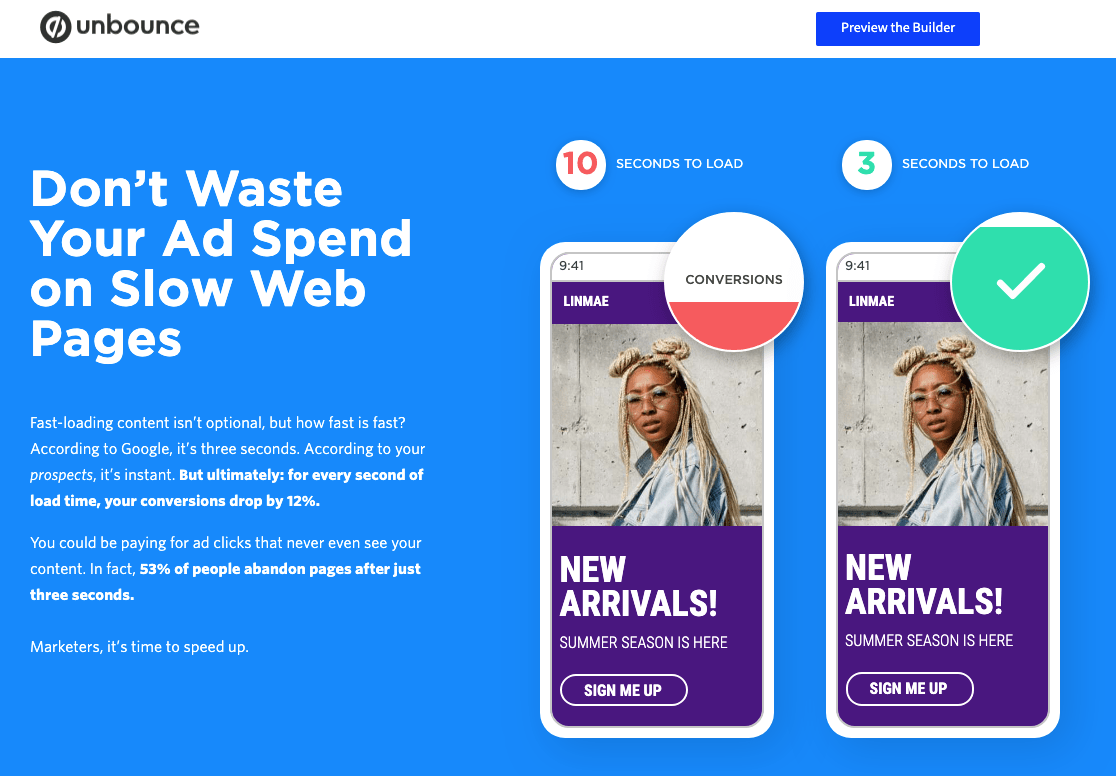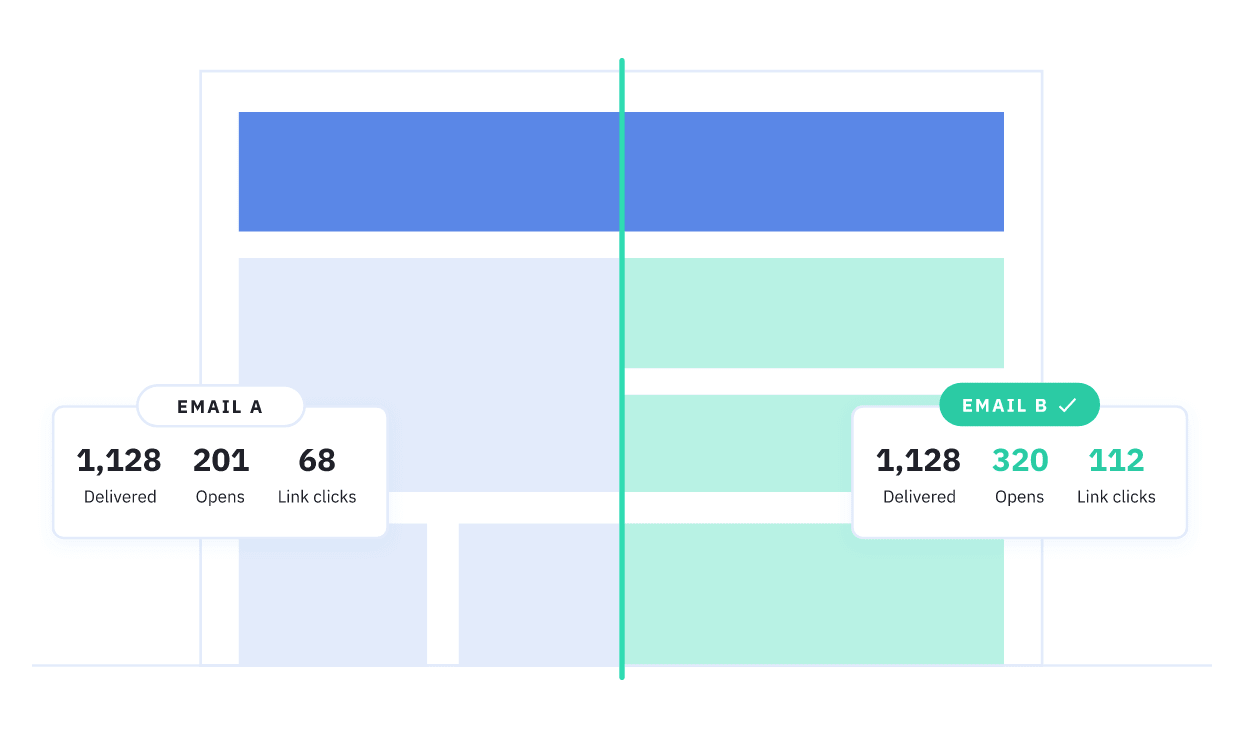Landing pages are a fundamental part of any website because they form your website’s first impression.
They are used to perform a lot of important responsibilities, including an increase of brand awareness, promotion of a new product or service, collection of feedback, conversion of followers into leads and conversion of leads into sales.

The importance of high-performing landing pages is perfectly illustrated in the Marketing Benchmark Report that gathered the data from 7,000 different online businesses. This report found that businesses that had more than 100 pages on their websites (and therefore more landing pages) generated 250 percent more leads than businesses with websites of less than 50 pages.
These findings suggested that landing pages are enormously important for inbound marketing because they are the centre of all leads generation efforts. But what can we do to design high-performing landing pages?
5 Fundamental Rules of Landing Page Design
1. Get straight to the Point
No one likes when the seller brags about their products, agree? The same rule also applies to the Internet business. People surfing the net generally have little time to read everything you wrote on the website, so if they see a large text waiting for them, you would be very lucky if they read it to the end. In reality, they never do it because they have limited time (does anyone read terms and conditions pages these days?).
To make sure that the viewer will indeed read the textual content on your landing page, it should get straight to the main point. They will scan the information for several seconds and if they like what they see there, they might click the button you want them to click.
Remember, people have come to your site for some reason and they would not appreciate it if you think that wasting their time is the right thing to do, like bragging.
2. Branding
Marketing experts recommend to brand and personalise everything these days to make the experience of the customer unique and the brand memorable. The logo is the most important distinct design element that should stand out on the landing page to be memorable and create a positive perception. Remember, that the logo should be placed strategically, which means that you should place it a non-promotional way but it still needs to be visible at all times.
If your landing page is connected to social media, ensure that your logo is consistent with the one have there. Otherwise, the visitors might get a bit confused.
3. Social Proof
Social proof is the evidence provided by social media users about the effectiveness of your product or service, so it can be considered as testimonials. By using the social proof that describes the correct behaviour, you will ease the minds of the unsure potential customers and therefore increase conversions.
This strategy can be very effective. According to Consumerist, almost 70 percent of customers rely on online reviews to make the decision whether to purchase a product, so placing positive reviews by real people on the landing page is a great move.
There are many types of social proof that you can use, including customer testimonials, celebrity endorsements, case studies, media mentions, customer base, trust seals, and others.
4. Use of colors
The main purpose of a landing page is to persuade visitors to click one button that will take them straight to the conversion page. This button should stand out in order to be visibly distinct, marketing experts say. In fact, they have an entire theory called the Color Theory to explain how the impact of colors on the impact on potential customers.
Contrasting color combination is the best way to go, marketers suggested. This strategy is explained like this: let’s assume that the background of the landing page has a white color and the information submission form has a shade of pink to differ from it. In order to be noticeable right away, the conversion button should have a contrasting color to white and pink, which could be red. A red dot on the white screen is easily noticeable and distinct, which is exactly what you need on the landing page.
Need more examples of the colors that convert? Check out this Instapage article.
[includeme file=”wp-content/themes/venture-harbour/blog-promo-boxes/lf-webinar.html”]5. Appropriate Formatting
To craft a really good landing page, you need to give a special consideration for formatting as well. All elements, including lead capture forms, images, headlines, and text, should emphasise the value of your product or service in order to be effective. The best way to organise the format is to use a visual user-friendly experience and a clear meaning.
To be easily digestible, your page needs to have a clear headline formatted in a larger font that the rest of the text. The headline itself should have three essential ingredients,” says Michael Popovski, a web design specialist from Proessaywriting, “such as focus, relevance, and benefits.” Focus is important because the headline should not be vague, so special formatting emphasis might be put on calls to actions. Next, the headline also needs to be relevant because it should be related to the offer on the landing page. Finally, you need to show what problems the product or service will help the visitor to solve by showing benefits. The benefits, by the way, should be as specific as possible.
There are many formulas for headlines that you can use but all of them aim to ensure these three ingredients. The amount of the text of the page should be kept to a minimum, plus it should highlight as many advantages of working with you as possible. Some subheaders also may be used to improve the understanding of the content.
Examples of Great Landing Pages
Now that we have enough knowledge about effective landing pages, let’s review some to see how these strategies are used in practice by different businesses.
1. Munchery

This landing page is beautifully made not just in terms of design but layout of the elements. The first thing that the visitors see is two boxes: the one with the submission form and the other with the benefits they will get after using the product. The design of the submission form was selected to illustrate the example of a white background and a red call-to-action button that we discussed before. The submission form itself has the white colour but the button is red, which totally shows the effectiveness of using contrast colors for making it distinct.
If the visitor decides to scroll down, they will see some statistics that the company provides to ensure its professionalism. Munchery uses the number of cooked meals and the volume of carbon emissions to show their popularity and environmental consciousness.
At the bottom of the page, the viewer is presented with the submission form once again. Good move, considering that the company is beautifully represented on the page, which means that the second time the visitor may be reassured in the righteousness of the decision to convert.
2. Loyal Blocks

The next example of landing page puts a special emphasis on the social proof because it cites Forbes, the New York Times, TechCrunch, MobileMarketing, and Daily News to support the effectiveness of the product. Moreover, it uses a customer testimonial: an owner of a café says that he has been able to increase the daily sales by 41 percent by using Loyal Blocks. Also, the page has a list of advantages associated with the product and a headline that encourages the visitor to take an action. Once again, the call-to-action button is made using a contrasting colour.
3. Ballpark

Another great example of a good landing page that uses a lot of elements described in the first section of this article, including the use of contrasting colours, social proof, and formatting. The headlines and the text clearly explain why the product should be used while a smiling customer tells the story of how Ballpark helped him to run his business. Also, a list of informational resources is presented to show how the company was portrayed there plus the site contains the submission box and a call to action both at the top and at the bottom.
The Final Thoughts
The landing page is the result of your effort to get more leads through the website. This is the ultimate place for conversion from visitors to leads and from leads to sales because it contains the information that persuades to make the decision you want the visitors to make.
Do it right.
You will craft beautiful and high-performing landing pages by using the tips described in this article. As soon as you create one, make sure that you have everything right and continue to improve it as needed. Remember, the process of crafting a great landing page can never be completed because trends and methods of attracting customers change very quickly.
This guest post is written by Tom Jager. Tom Jager is a professional blogger. He works at A-writer. He has a degree in Law and English literature. Tom has written numerous articles/online journals.




